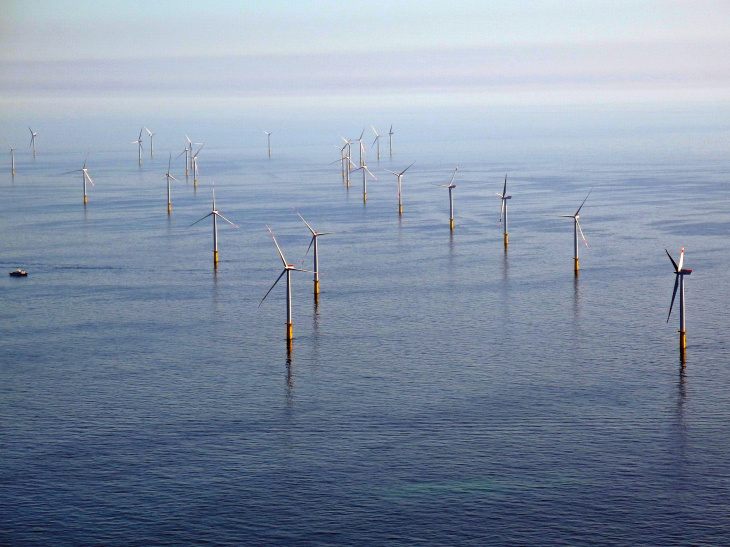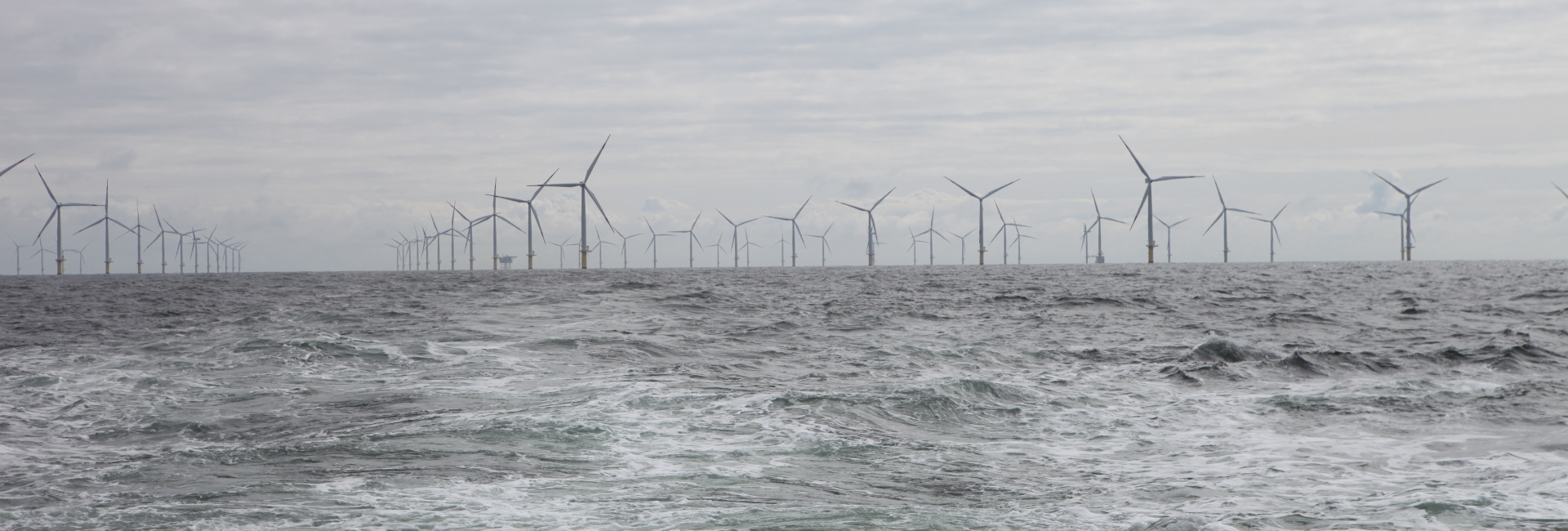Offshore wind farms: In the transition zone between land and sea
Although they are 100 kilometres away, offshore wind farms can still be strongly influenced by the land - they are located in the atmospheric transition area from land to sea: the coast. The wind from the land towards the sea plays a particularly important role here: it accelerates over water. Furthermore, the temperature difference between land and water as well as the current sea state have an additional influence. These and other factors together are called coastal effects.

Offshore-Windparks. Foto: Hereon/Sabine Billerbeck
They have an impact on the type, speed and amount of wind that offshore wind turbines are supposed to make the best possible use of to generate electricity. Researchers at the Helmholtz-Zentrum Hereon have now coordinated a study as part of the X-Wakes project funded by the German Federal Ministry of Economics and Climate Protection (BMWK), which provides an overview of already known coastal effects. In addition, it shows that further research is needed for more precise simulations and measurement methods to better predict these effects in the future. Apart from the Helmholtz-Zentrum Hereon and the Karlsruhe Institute of Technology (KIT), the Fraunhofer Institute for Wind Energy Systems (IWES), the universities of Braunschweig, Tübingen and Oldenburg as well as UL International are involved in the study.
The complexity of coastal effects
The project partners analysed simulation and observation data and used it to prove that the wind speeds in individual offshore wind farms depend strongly on the wind direction. This is mainly due to the special shape of the coastline in the German Bight. In addition, the researchers found that the interactions between ocean and atmosphere - such as the exchange of heat - should be taken more into account. Another result: the mechanical and thermal properties of the tidal flats, such as the roughness of the surface and their impact on coastal effects, are not yet sufficiently understood.
"The interactions of wind shadowing behind offshore wind farms with coastal effects have also been insufficiently investigated," says first author Johannes Schulz-Stellenfleth of the Hereon Institute of Coastal Systems - Analysis and Modeling.
Making reliable statements about the operating performance of turbines in wind farms is challenging because of the many mutually influencing coastal effects. With the accelerated expansion of offshore wind farms, these installations will have an increased impact on the transition processes between land and ocean and add to the complexity of coastal effects. Knowing these precisely, however, is necessary to be able to determine sustainable locations for future wind turbines or to be able to make short-term forecasts for feeding into the power grid. This is the only way to ensure a stable energy supply from wind power in the long term. Continuing research in this field thus makes a decisive contribution to a stable energy supply from wind power.
Further information
- Original publication: Schulz-Stellenfleth, J., Emeis, S., Dörenkämper, M., Bange, J., Cañadillas, B., Neumann, T., Schneemann, J., Weber, I., zum Berge, K., Platis, A., Djath, B., Gottschall, J., Vollmer, L., Rausch, T., Barekzai, M., Hammel, J., Steinfeld, G., Lampert, A. (2022). Coastal impacts on offshore wind farms – a review focussing on the German Bight area. Meteorologische Zeitschrift. https://doi.org/10.1127/metz/2022/1109
- Institute of Coastal Systems - Analysis and Modeling | Hydrodynamics and Data Assimilation
Contact
Institute of Coastal Systems - Analysis and Modeling
Helmholtz-Zentrum Hereon
Communication and Media
Helmholtz-Zentrum Hereon
